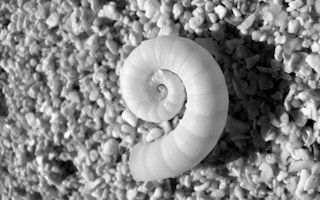This century, in order to deal with growing environmental crises, significant technology breakthroughs must be found. While we are currently mostly focusing on existing ideas and improving technologies which have long been known, what we really need is a “green revolution” and new ideas to support a low carbon economy. This will only be achieved through a significant new way of thinking.
Biomimetics and using ecosystem services to our advantage could truly be the next big revolution. However, we are currently doing the exact opposite of what is required by destroying the very species holding the key to the innovation breakthroughs that might ensure our own survival.
Biomimetics, the study of natural processes and living species for the purpose of imitating them for human related processes, is very promising but is still in early stages and currently largely unexploited. Gaining inspiration from biology could play a double role of both fueling a green revolution and providing an additional business reason to preserve biodiversity.
There are only a few real case studies to illustrate biomimetic applications to date. Most often examples are merely demonstrations of similarities between natural processes and engineering applications; these technologies haven’t really been developed by studying species themselves.
Probably one of the best examples of a technology that is truly the product of the in-depth study of a species trait is “Velcro,” which is widely used around the world to stick surfaces together. This invention was derived from the seed of Arctium lapa.
Other examples include the winglets on the tip of airplane wings that mimic birds’ wings to significantly improve fuel consumption during flight; certain recent breakthroughs in robotics that have been achieved by studying the walking patterns or neuronal signals of simple insects; a building in Africa that has been constructed by mimicking the structure of a termite nest, which uses a chimney effect to provide very efficient natural cooling; and the submersible and its similarities with the pressure compartments of the species of Nautilus.
Also noteworthy is the fact that our medicines are derived from molecules found in the few species that can be replicated and reproduced in the laboratory (most molecules are too complex to be artificially synthesised). Such pharmacy applications are also a branch of biomimetics.
To date the concept hasn’t really been exploited to the level it could be and we do not seem to have understood the potential. Yet the main concept is simple: because species on Earth are the result of millions of years of adaptations enabling them to survive over time in their given ecosystems, they already provide highly specialised and adapted traits that we can imitate instead of trying to find the answers by ourselves. Solutions to the numerous engineering problems that we face can be found through the study of species.
This statement relies on simple facts and logical deductions:
- There are still millions of species on the planet (anywhere from 40 to 150 millions);
- Species are found in almost any given type of environment on Earth;
- Each environment requires very specific adaptations for species to have survived over time;
- For species to have survived over time, the adaptations they have gained are optimized to deal with their environments.
Thus, wherever we want to find optimal adaptations and efficiency in design, we should first search for it in nature; the odds are that one or more species already provide the ultimate solutions and adaptations.
A methodology for thought
Along with an understanding of the value of exploiting these adaptations, we must also develop a clear methodology for businesses to benefit from the concept. No real methodology has been put in place.
Whenever looking into applying biomimetic principles to a problem, the following simple methodology could be applied:
1) Ask: what problem do we intend to solve? E.g. maximize the efficiency of flight; find the best shape to maximise energy and strength output (for instance insect builders such as ants or bees construct structures which through their shape and materials are much stronger and lighter than the constructions that we do today); find a way to climb vertical surfaces; find an antifouling solution to avoid algae buildup on ships (which costs the shipping economy billions of dollars each year); develop the most efficient solar cells (plants still convert solar radiation to energy in a much more efficient way that any photovoltaic cell can achieve today); and the list of problems that we need to solve and find the ultimate solution for is virtually infinite…
2) Find species in nature that have had to adapt to a similar problem;
3) Perform in depth study of the adaptations or traits that have allowed these species to resolve the problem;
4) Apply the natural traits by artificially mimicking them through engineering, robotics, pharmacology or other discipline.
This last part of the process may take years of research. However, the research has a higher chance of success than non-biomimetic research (having already been proven in nature) and the payback is likely to be an innovation breakthrough.
For biomimetic research to be successful, it requires the work of truly multidisciplinary teams comprising engineers, biologists, chemists and project managers. If we look at history, the real scientific breakthroughs have most often occurred at the frontier of sciences through a multidisciplinary approach. It therefore makes sense that this is the way we should go if we intend to make innovation breakthroughs quickly.
The business angle
Businesses and investors who see the huge opportunity presented by biomimetics will allocate the resources to exploit biomimetic principles. It will be challenging but the payback is potentially enormous. In a world in which we face truly un-precedented environmental and energy crises, we need an innovation revolution and a total change of practices.
The interesting aspect of biomimetics from a business perspective is that a large part of the work is already available; all that needs to be done is to allocate the resources to find the appropriate species to study and then extract the ideas that can be applied to the business. Today, most of the workload in corporate research and development is put into finding new innovative ideas that will provide a market advantage over competitors. The amount of time allocated could be drastically reduced by searching for the solution in nature rather than spending millions of dollars in unproven research.
Global corporations wanting to take the lead in innovation and R&D with cost effective solutions should be looking at biomimetic principles to provide precisely what manufacturers and service providers seek in a competitive corporate world.
The limitation and the biodiversity crisis
Even as we struggle to understand the potential of biomimetics, the very material to develop this revolutionary field is on a path of disappearing.
We know that species on Earth are being driven to extinction at alarming rates. According to Conservation International at least one species goes extinct every 20 minutes. While the rate of extinction is impossible to estimate with certainty due to the simple fact that the vast majority (about 90 per cent) remains to be discovered and studied, we do know very well that natural habitats are vanishing as a result of our activities (deforestation, urbanization, agriculture, fires…). We also know that the global climate is warming (which is already starting to bring many species to extinction and will become a predominant driver for species extinctions in years to come) and that human induced pressures such as pollution are pushing species to extinction at a rate at least 1000 times the natural rate of species extinction.
Like nanotechnology (which itself could move forward through biomimetic studies), biomimetics could lead to the next industrial revolution. We are however destroying the “knowledge bank” necessary for this revolution to happen. If governments and corporations globally could realise the potential there is in preserving biodiversity for biomimetic applications, they would certainly act to preserve the diversity of life on Earth. They would treat biodiversity as an asset, an investment or perhaps a global data bank. There is still hope that such realisation could happen. But time is running out fast.
Sylvain Richer de Forges is head of sustainability at Siloso Beach Resort.









